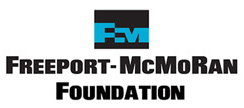TEXTILE CLASSES BY LEAH KLEARMAN

CLASS OVERVIEW
Have a sewing project that got stalled in the middle? Do you work better when you’ve got someone to chat with while you work? Need some equipment you don’t have at home? Simply can’t thread your needle? Ask about Projects Half Done once a quarter at the Future Forge. Free for Future Forge members, $5 per visit for community members. No registration required.
Click, Drag, and Zoom to Explore the 360° Virtual Tour
Textile Area General Safety Rules
Members assume responsibility for themselves and the equipment use. Please use common sense and if you have questions/concerns do not hesitate to ask!!
- Keep long hair / loose garments away from machines, sharp items and iron!
- Do not use machines / items you have not been cleared on.
- Please keep food and beverages sealed / away from machines.
- Do not leave cords across walking areas.
- Turn off all machines (including iron – please unplug) when you leave.
Sharp Objects
Needles & Pins
- Keep pins on the pin cushion / magnetic keeper when not actively using them.
- Store needles in pin cushions, corks, or other items specifically designed for needle storage.
- Safety pins that look bent are specially designed for pinning multiple / thick layers, and are commonly used in quilting.
Scissors
- Keep scissors closed and pointing away from you when not in use. When handing sharp items to another person, always do so with its handle towards them.
- Do not use sewing scissors to cut anything other than fabric / textiles / thread.
Cutting Wheels and Mat
- Always cut away from you.
- Use a straight edge as often as possible.
- Keep fingers on the straight edge and away from cutters.
- Always close blade cover after use.
- Use the correct mat for the project – do not cut directly on the work table.
Iron
- Only touch iron using its handle, it can burn you!
- Keep your fingers and face out of the steam path of the iron, and be careful touching fabric freshly ironed – it’s often still very hot!
- Always check the temperature setting and use the correct setting for the fabric.
- Use the iron on an ironing board or specifically designed pad / tool.
- Rest iron on its heel, on stand, or approved pad, NEVER plate down on any surface.
- Only use distilled water in the iron.
- Always unplug after use.
In addition to a regular ironing board, we also have an ironing ham, a point form, and a velvet ironing needle board. Limited quantities of spray starch are available.
- 8 domestic sewing machines
- interlock machine (brother Lock 1034D)
- embroidery machine (Singer Futura SES 1000)
- ironing board, irons, specialty ironing tools, starch
- quilt design board and queen sized hand quilting frame
- cutting matts, straight edges, scissors, cutting wheels, large layout table
- pins, snips, measuring tapes, dressmaker’s rulers
- knitting needles, crochet hooks, needlepoint frames
- embroidery floss, yarn
- fabric dyes, buttons
- books on textile arts
- and of course, needles and thread
We generally have at 8 domestic sewing machines on-hand, at various levels of complexity. They all perform the same basic functions, but there are differences between manufacturers and models.
- Singer 44S (Classic and Scholastic)
- Brother XL 5340 user’s manual and instructional playlist.
- Brother VX 1140
- JCPenney, Montgomery Ward, Sears Kenmore all metal machines
- Bernina Record 730
Use our Brother Lock 1034D to professionally finish the edges of your fabric, create stretchy seams on knits, or create other effects.










